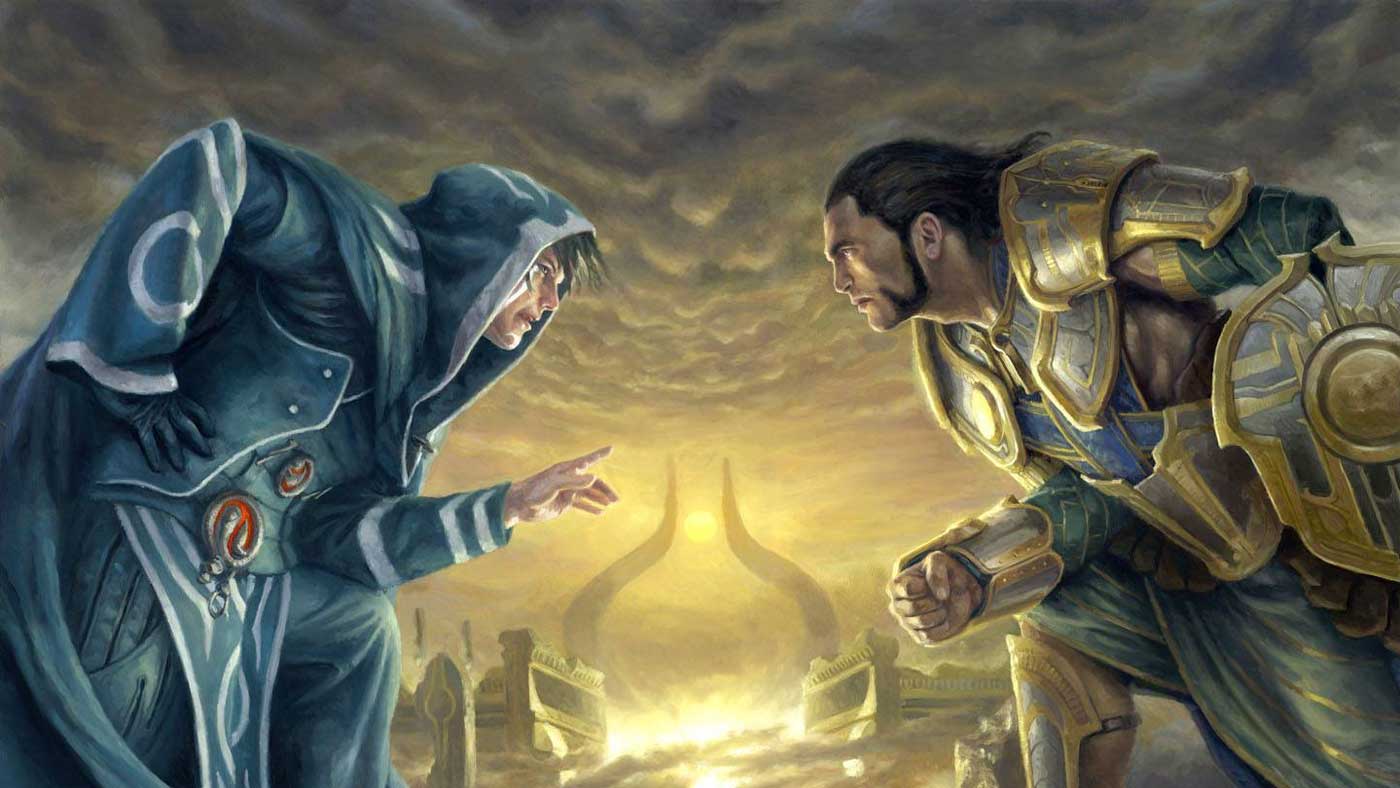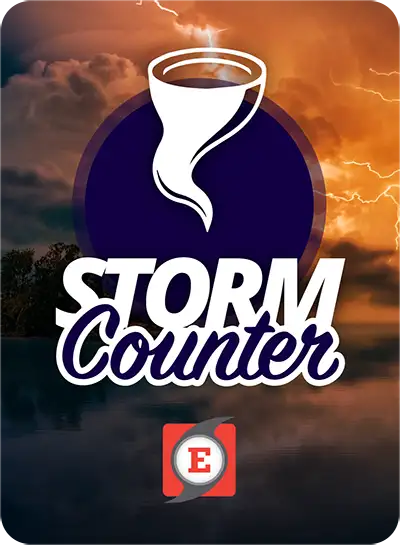There are lots of types of plans in Magic. Most planning is focused on everything that comes before sitting down and drawing an opening hand such as game plans and sideboard plans. Planning out the next few turns during the game, however, can be the most important type of planning. The EPIC Storm compresses the game down to just a few turns. When looking at an opening hand, one of the things to look for is a clear path to victory, or at least going off. When making a plan there are a couple of things to consider:
- Potential combo turn
- Combo Engine
- Available disruption
- Opponent interaction
Making a Plan
The potential combo turn is the turn that the plan attempts to go off. Sometimes this turn is picked before even looking at an opening hand and influences mulligan decisions. For example, in the Death & Taxes match up, comboing on turn 1-2, or a way to deal with a
Thalia, Guardian of Thraben is required. When evaluating an opening hand, planning out a few turns to cast cantrips or disruption spells is important. Having a combo turn in mind helps figure out what those cantrips want to find. If a faster combo is required, we aim to shuffle away effects that are slower, such as
Chrome Mox or
Rite of Flame, in favor of faster effects, such as
Lion's Eye Diamond and
Dark Ritual. Picking a combo turn can also inform the combo engine that is used. Sometimes the hand can make the plan for you, but with the London mulligan, sending back hands that do not meet the engine requirements for a match up, such as an
Empty the Warrens hand against Lands, becomes a lot easier.The last piece of the hand that should inform the plan is the disruption available and what disruption is needed in the match up. The choice between a turn one
Ponder and a turn one discard spell is a question that comes up when first learning storm play patterns. The answer is often it depends on the plan. What are the mana requirements for each turn? If the plan is to go off on turn two with exactly the mana available, then casting the discard spell on turn one makes the most sense. Otherwise, the
Ponder may make more sense.
Wasteland and
Chalice of the Void are also two big pieces of interaction to consider when making this choice as part of the plan. If the hand loses to a
Wasteland, fetching an
Underground Sea for a
Thoughtseize into a
Brainstorm on the next turn may not be the correct play. However, taking the
Chalice of the Void that would prevent playing either spell may be more important. This is especially an awkward decision in the blind and planning for either with a way to recover is important.This brings about the hardest part of making a plan: playing around what an could opponent have. Magic is a game with hidden information and playing around that information is key to making a plan. Sometimes there is a hand that can beat anything an opponent would have. Sometimes choosing to lose to a specific card is part of the plan if you can't afford to play around it. Discard spells help provide that information of what to play around. This can be a reason to cast discard spells earlier; to gain that hidden information. The hidden information might not be just counter spells. As mentioned previously, playing around a
Wasteland or
Chalice of the Void may be important as well. Another type of disruption is opposing discard spells. A lot of the time leaving the best card on top of the library instead of drawing it with cantrips is the best plan against opposing discard.
Examples
Considering this hand in the blind and on the play, there are a couple of options. This hand starts with five available mana on turn two with the tutor effect being a
Burning Wish. This means that it needs one more mana to cast
Empty the Warrens and four more mana to
Burning Wish for
Dark Petition for
Ad Nauseam. Unless
Brainstorm finds an
Infernal Tutor, the plan should revolve around optimizing those win conditions. Resolving the
Brainstorm is important for this hand and playing for that should be a consideration. One option is to play
Bloodstained Mire and fetch an
Underground Sea. This leads into a line of turn one
Thoughtseize into turn two
Brainstorm (hoping to find mana and a fetch land) into a turn three kill. This may be too slow, however, in a matchup and exposes the only blue source to
Wasteland. To aim for a turn two kill through a counter spell, the hand needs to find three more mana. This could be achieved by playing
Bloodstained Mire and casting an end step
Brainstorm hoping to find four more mana in the top three cards. However, in a scenario where the opponent has a
Chalice of the Void, this doesn't turn out as well. Casting a turn one
Thoughtseize off of the
Badlands sets up a very similar scenario for a turn two kill: needing to find four mana off of a
Brainstorm. The difference here is that
Brainstorm digs one card deeper because of a natural draw on turn two. This plan also sets up for a very nice fall back for a turn three kill if the
Brainstorm misses. If I was playing this hand, I would take the third line and reevaluate what
Brainstorm needs to find once I see the opponent's hand.
This is a hand that presents a much clearer plan.
Ponder needs to find one more mana to cast
Ad Nauseam on turn two, assuming that the opponent does not have any disruption. Because winning undisrupted is so easy, crafting a plan to beat as much disruption as possible is important. This is where the flexibility of
Burning Wish shines. Having to cast the
Burning Wish does delay the clock by a turn, but with
Ad Nauseam as the engine, that should be fine.
Burning Wish can find either
Duress or
Pulverize to play through whatever the opponent has. To help facilitate this,
Bloodstained Mire needs to find
Volcanic Island to have the second mountain for
Pulverize. Thinking a few turns ahead here mostly informed the fetching decision to avoid the default fetch for
Underground Sea.
Drawing an
Empty the Warrens may influence a plan to bend towards casting it. In this hand, however,
Empty the Warrens should not be part of the plan.
Lion's Eye Diamond plays much better towards the
Infernal Tutor that is also in the hand. This lends nicely into a turn three
Ad Nauseam line after hopefully finding another three mana from
Brainstorm to be able to cast
Thoughtseize into combo on that turn.Planning is an integral part to playing Magic and should be a part of evaluating every hand. For one of my next articles, I'll go into what happens when plans go wrong and how to pivot! Until then, make sure you know when the storm is coming!


























